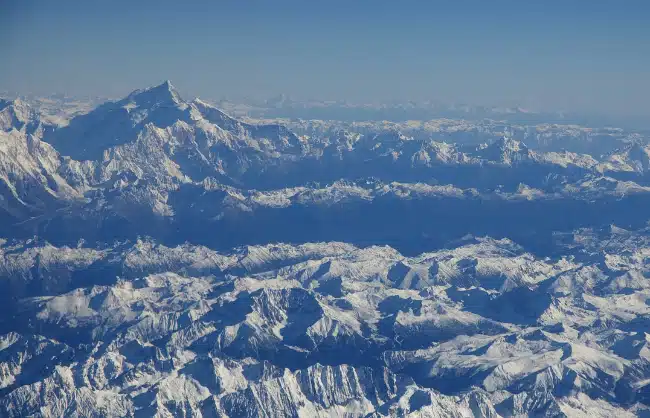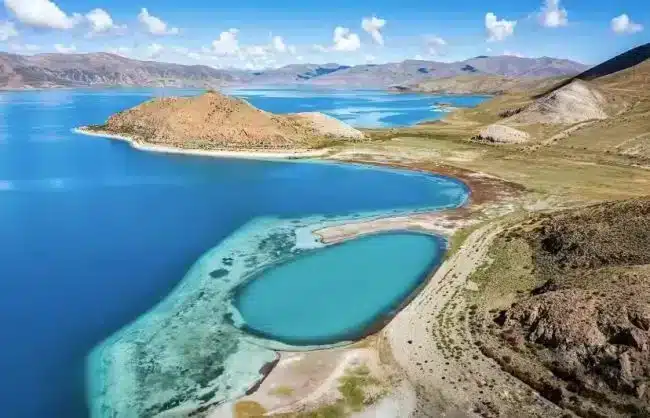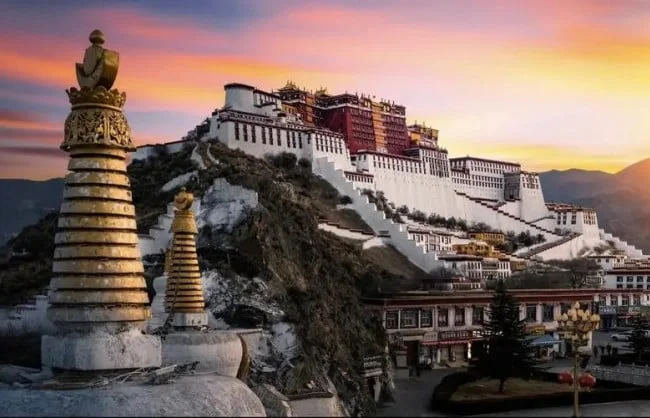The Tibetan Plateau is known as the “Roof of the World.” It is an inland region in Central Asia. The unique geographical landform and the civilization it has nurtured make Tibetan Plateau a place of pilgrimage for travelers and researchers around the world.
This article will take you through the very special characteristics of Tibetan Plateau, including remarkable geographical features, rich biodiversity, cultural heritage, environmental challenges, tourism, and research value.

1. What is the Tibetan Plateau
The Tibetan Plateau covers an area of approximately 2.5 million square kilometers (965,255 square miles). It is the highest and largest plateau on Earth. The average elevation of the plateau exceeds 4,500 meters (14,800 feet). The area and height of Tibetan Plateau impress almost everyone who’s visited and leave them in awe.
The plateau is surrounded by rolling mountain ranges, with the Himalayas to the south and Kunlun Mountains to the north. Almost a quarter of China’s land area is the Tibetan plateau. Most of the plateau is in Tibet with other parts in Qinghai, Sichuan, and Xinjiang. Outside the border of China, the Himalayas and Karakoram Range are in Nepal, India, Pakistan, and Bhutan.
Global Significance
The Tibetan Plateau is significant to the entire human civilization in many aspects. It is an indispensable part of Earth’s ecosystem, regulating the global climate. It is a vital water source for several major rivers in Asia, including Yangtze, Yellow River, Indus River. On top of that, it is the birthplace of many beautiful cultures.
2. Geographical Features
Altitude and Climate
Due to its elevation, the Tibetan Plateau has an extreme climate. The region has long, harsh, very dry winters with incredibly low temperatures and short, cool summers. The low oxygen level is challenging for human habitation but at the same time has created rare, extraordinary landscapes. These plateau landscapes are definitely worth a Tibet tour.
Rivers and Lakes
The Tibetan Plateau is the origin of many notable rivers that flow through Asia. Water from the Tibetan glacier sustains millions of people living downstream. It’s their important source of freshwater for drinking, agriculture, and other needs.
If you travel to Tibet, you’ll see the plateau dotted with breathtaking lakes, including the renowned Namtso and Yamdrok lakes. They’ll be nothings like the lakes you’ve seen before.

3. Biodiversity
Unique Flora and Fauna
The diverse ecosystems on Tibetan Plateau support a variety of unique plant and animal species. Plant lives range from alpine meadows and shrubs to cold desert vegetation.
Some of the notable wildlife found in the region include the elusive snow leopard, Tibetan antelope, wild yaks. There is a shocking number of bird species including blue-capped redstart, black-throated accentor, red-mantled rosefinch, and red-fronted serin.
Endangered Species
Unfortunately, the number of endangered species on Tibetan Plateau is increasing because of the rapid climate change, habitat degradation, and poaching.

4. Cultural Heritage
Tibetan Buddhism
The Tibetan Plateau is a spiritual land of pilgrimage for believers of Tibetan Buddhism around the world. There has been lots of monasteries and temples in the area since ancient times. Values and traditions of Tibetan Buddhism are deeply ingrained in the lives of the people on the plateau.
You can visit these sites to appreciate the architectural brilliance and learn about the spiritual life of Tibetan people. Some of the famous examples are the Potala Palace in Lhasa, the Jokhang Temple, and the Tashilhunpo Monastery.
Traditional Tibetan Culture
The unique landscape and location of Tibetan Plateau have nourished a rich culture. The Tibetan people have preserved their ancient traditions, customs, arts, making the plateau a living museum of Tibetan culture. Witness festival celebrations with traditional music. See marvelous thangka paintings and handicrafts.
.webp)
5. Environmental Challenges
Climate Change
The Tibetan Plateau, like many other regions, is facing drastic impacts of global climate change. Rising temperatures, melting glaciers, changing precipitation patterns are threatening the delicate ecosystems of the plateau.
Wildlife Conservation
Conserving the wildlife of Tibetan Plateau has become a more and more pressing task. Right now, there are designated protected areas and promotions of sustainable tourism practices in order to minimize disturbance to the fragile habitats.
6. Tourism and Adventure
Popular Tourist Destinations
Countless people from around the world travel to Tibet to witness its natural and cultural wonders in person. Many go to Lhasa, the capital of Tibet, to visit the Potala Palace and the Barkhor Street. Other famous destinations in Tibet include the Mount Everest Base Camp, the sacred Mount Kailash, and the magnificnet Yarlung Zangbo Grand Canyon.
Trekking and Mountaineering Opportunities
For those interested in adventures and explorations, Tibetan Plateau has the most exciting and challenging opportunities for mountaineering. The region is home to some of the world’s tallest peaks, including Mount Everest and Mount Cho Oyu. Hiking on Tibetan Plateau can be a once in a lifetime experience.
Recommended Tibet Tours
- 8 Days Lhasa to Everest Base Tour
- 8 Days Tibet Tour with Everest Base Camp
- 10 Days In-depth Tibet Adventure Tour: Lhasa-Gyantse-Shigatse-Mt. Everest -Lhasa -Namtso -Damxung- Lhasa

7. Scientific Research
Exploration and Discoveries
The Tibetan Plateau has attracted scientific researchers from different areas to study its uniqueness. Geologists, climatologists, biologists, and plenty of others have studied its geological formations, climate patterns, and ecosystems.
Geological and Climate Studies
Two of the most important fields of study taking place on Tibetan Plateau are the Earth’s geological changes and climate dynamics. Researchers have studied how the plateau was formed, impact of tectonic activities, and the role of the plateau in shaping regional and global climate patterns.
The Institute of Tibetan Plateau Research (ITP), Chinese Academy of Sciences (CAS) was founded in 2003, for ensuring the sustainable development of Tibetan Plateau.
ITPCAS consists of four research centers focusing on different aspects of Earth System Sciences: Environment Changes and Land Surface Processes, Continental Collision and Plateau Uplift, Alpine Ecology and Human Adaptation, and Three-Pole Observation and Big Data.
Related Reading
- Tibet Travel Guide
- 15 Fascinating Silk Road Facts You Didn’t Know
- Is Tibet Safe to Travel? Useful Tips on Tibet Travel
- Tibetan Art and Culture: Tibetan Language, Music, Painting, and More









